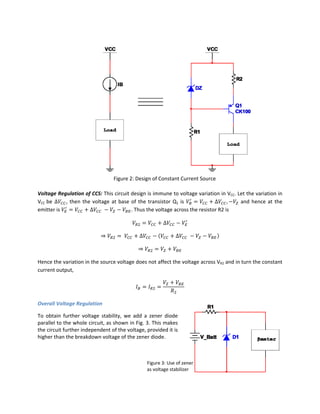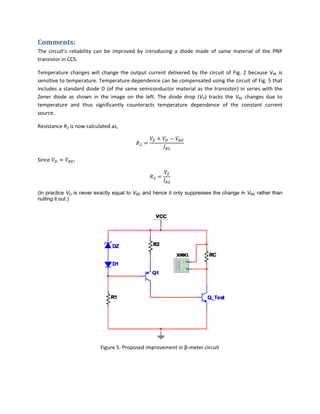This document describes the design and testing of a circuit to measure the beta (β) value of NPN bipolar junction transistors (BJTs). The circuit uses a constant current source to pass a fixed current through the collector-emitter path of the BJT being tested. The voltage across a resistor in this path corresponds to the β value in millivolts, which can be read on a digital voltmeter. The constant current source and full β-meter circuit are described in detail. Testing showed close agreement between β values measured by the circuit and those from a digital multimeter.




![Calculations:
Let us choose the VBatt to be 7.5V (a standard value). Then, the other circuit parameters are as follows:
Effective Supply Voltage (VCC) [Across the zener diode of 4.7 V]
4.7V
Collector Resistance (RC)
4.7
0.25
88.36 Ω
Choose 200 Ω
Constant Current (IB) from CCS
10 10
200
5 10 A 5 A
Transistor (Q1) in the CCS: PNP transistor CK100 with
0.7 V
(Assumed, datasheet not available)
Zener Diode in CCS
2.7 V, 5 mA
…….
Resistor (R2) in CCS
2.7 0.7
5 10
4 10 Ω 400 kΩ
Resistor (R1) in CCS
4.7 2.7
5 10
400 Ω
Choose 330 Ω
(To allow slight variations in supply voltage)](https://image.slidesharecdn.com/easylabs-exp4-betameter-190327110556/85/Easy-labs-exp4-beta-meter-5-320.jpg)


